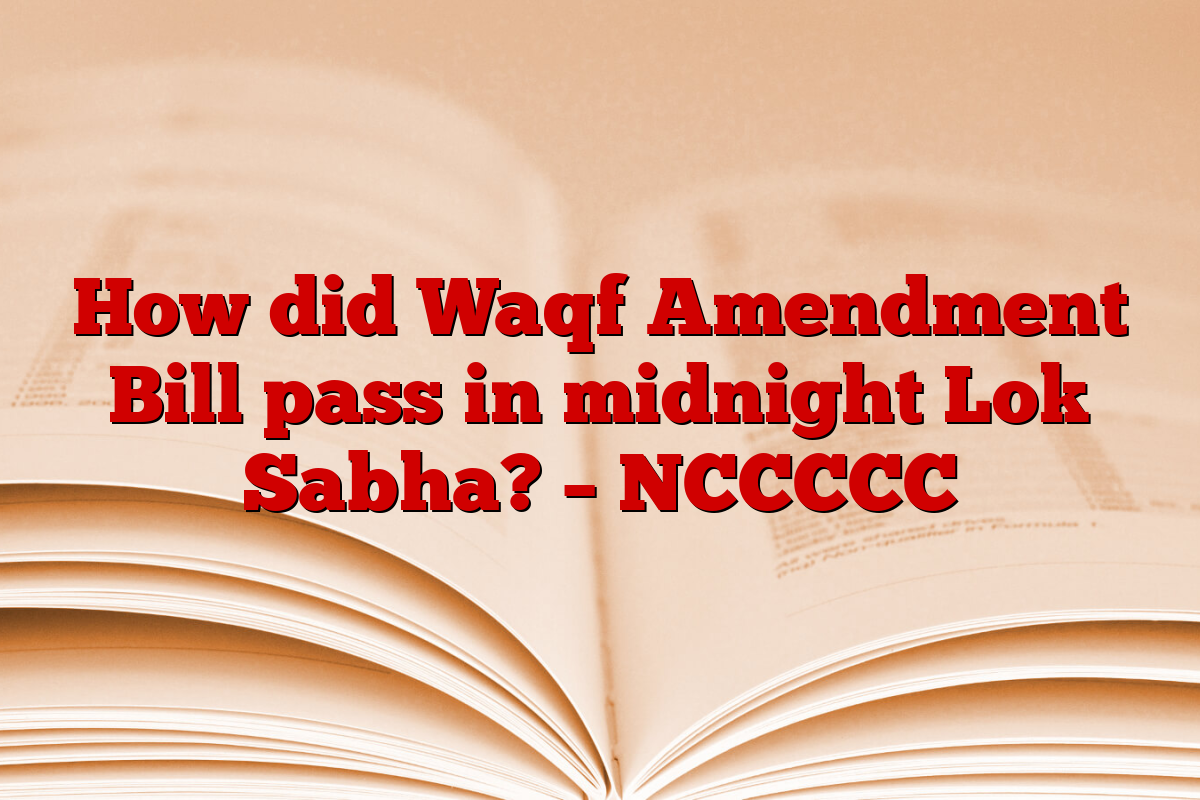Waqf Amendment Bill 2025 is an important and controversial bill in India, which was passed in the Lok Sabha at midnight. This bill has been introduced with the aim of improving the management and administration of Waqf properties. In this article, we will discuss the main provisions of this bill, the process of passing it, and the reactions associated with it.
Overview of waqf amendment bill 2025
| Description | Information |
| Bill name | Waqf amendment bill 2025 |
| Date of passage | 2 April, 2025 |
| Voting in Lok Sabha | 288 in support, 232 in protest |
| Main objective | Better management and transparency of Waqf properties |
| major revision | Non-Muslim participation in Waqf Board |
| Protection of women’s rights | Inheritance |
| Use of technology | Property management by centralized portal |
What is waqf amendment bill 2025?
The Waqf Amendment Bill 2025 aims to modernize and bring transparency to managing Waqf properties in India. Waqf properties are those which are permanently dedicated to religious or charity purposes. This bill has proposed several important amendments:
- Participation of non-Muslim members: Non-Muslim representatives will be included in Central and State Waqf boards.
- Protection of women rights: Women special provisions to ensure their legacy.
- Waqf by user removal: The process of declaring property as Waqf is over the basis of prolonged religious use.
- Financial transparency: Audit by state of institutions with more than ₹ 1 lakh income.
Waqf Amendment Bill 2025: Discussion in Lok Sabha
This bill was about 12 hours long debate in the Lok Sabha. The opposition called it “against minorities”, while the government described it as “transparency and reform”.
Government side:
- Amit Shah: “This bill will not forcibly declare anyone’s land as Waqf. It will only apply to the assets that have been donated voluntarily.”
- Kiran Rijiju: “This bill does not affect religious institutions; it is only related to property management.”
Opposition to opposition:
- The opposition alleged that the bill violates the rights of minorities of the Constitution.
- The Congress and other parties described it as “weakening of minorities”.
Key provisions of the bill
major revision:
- Non-Muslim representation: Including non-Muslim members in Waqf boards.
- Women’s Rights: To ensure their legacy to women and children.
- Decreasing financial contribution: reduce the compulsory amount given by Waqf to the board from 7% to 5%.
- Dispute resolution process: Appointing senior government officials to resolve property disputes.
Technical Reforms:
- Registration of all Waqf properties by centralized portal.
- Technology based record management.
Why was it passed at midnight?
The Lok Sabha passed this bill after midnight. The main reasons behind this were:
- Long debate: The discussion lasted till late night due to a fierce debate between the opposition and the government.
- Political Strategy: The government passed the bill, rejecting opposition amendments.
Voting results:
- In support: 288 votes
- In protest: 232 votes
Criticism and controversy
Waqf amendment Bill 2025 was also criticized:
- Religious Intervention: Critics believe that non-Muslim members’ participation is intervention in religious affairs.
- Concern of minorities: The Muslim community feared that this could make their properties disputed.
- Opposition allegations: Opposition called it “an attack on constitutional rights”.
Benefits of the Bill
Positive aspect:
- Increased transparency: centralized portal and audit processes.
- Protection of women’s rights: to ensure women their legacy.
- Dispute solution: process of resolving property disputes quickly.
Inclusion:
The participation of non-Muslim members will increase inclusion among communities.
Conclusion
WAQF Amendment Bill 2025 is an important bill that claims to improve the management and administration of Waqf properties. However, its critics consider it an attack on the rights of minorities.
Disclaimer:
The bill is real and has been passed by the Lok Sabha. However, the final decision on its impact can be taken only after its implementation.
